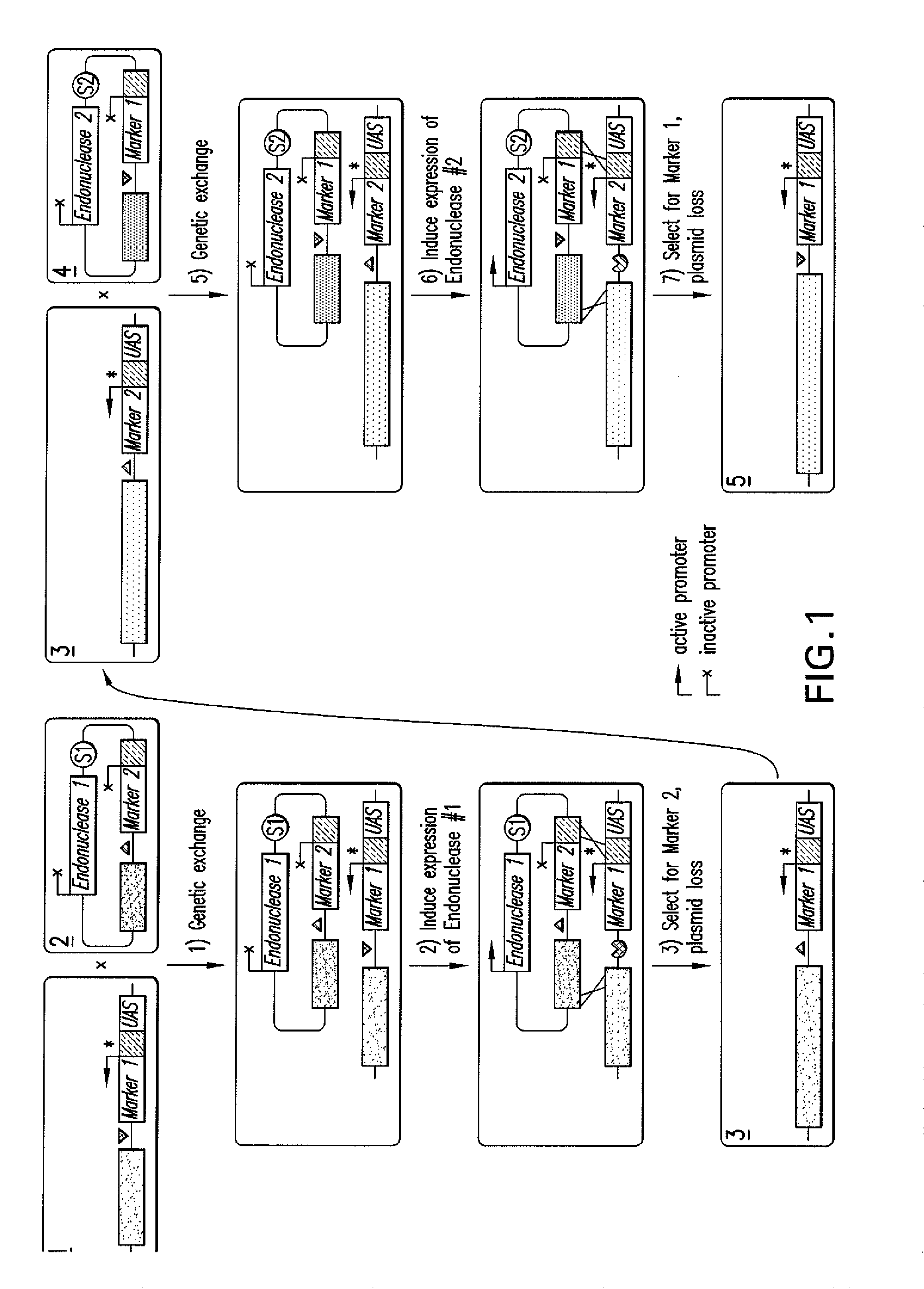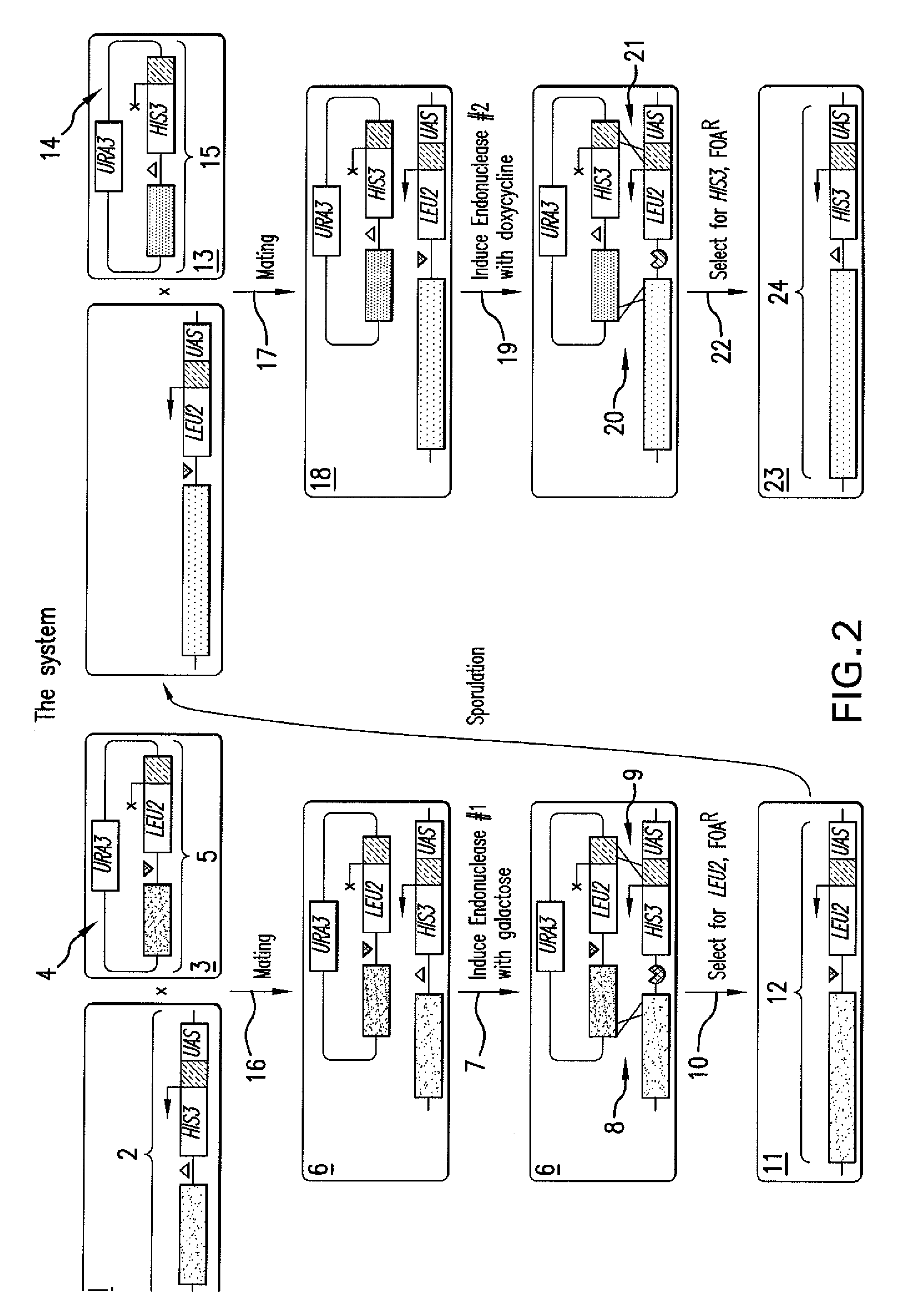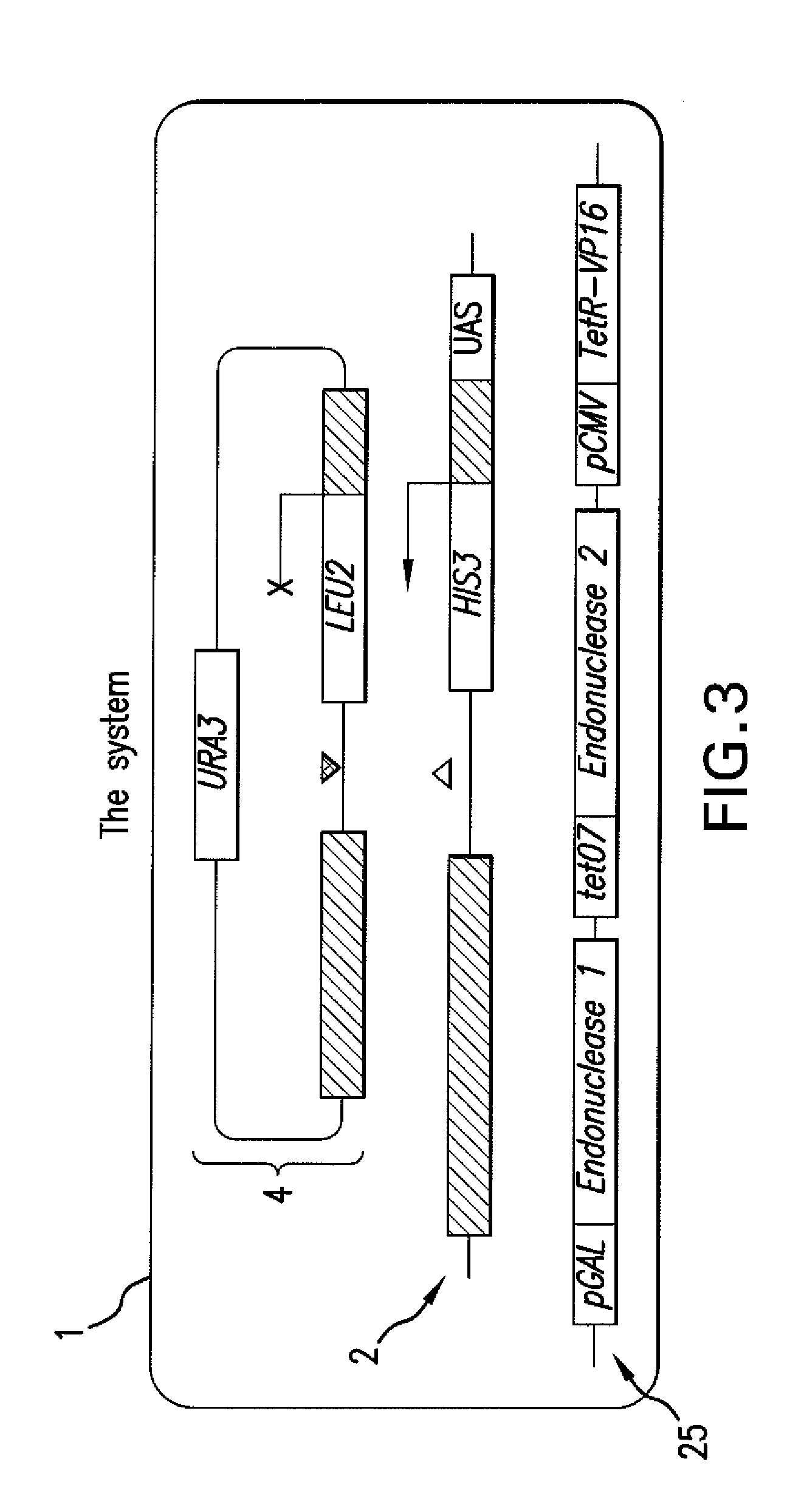In vivo assembly of DNA via homologous recombination
a technology of homologous recombination and in vivo assembly, which is applied in the field of in vivo assembly of dna via homologous recombination, can solve the problems of requiring a work-intensive approach and substantial laboratory resources, and achieve the effect of promoting efficiency
- Summary
- Abstract
- Description
- Claims
- Application Information
AI Technical Summary
Benefits of technology
Problems solved by technology
Method used
Image
Examples
##ic example 1
5.8 Prophetic Example 1
[0124]FIG. 4 presents diagrams that illustrate construction of odd and even donor complexes providing odd and even donor modules from a single parent plasmid, pRS416; (Acc. No. UO3450, yeastgenome.org, submitted 11 Nov. 1993 by David J. Stillman, Dept. of Cellular, Viral and Molecular Biology, University of Utah Medical Center, Salt LakeCity, Utah 84132 USA; Sikorski and Hieter, 1989, Genetics 122:19-27; Christianson, et al., 1992, Gene 110; 119-122) which is a shuttle vector comprising yeast CEN6 sequence, the URA3 gene, the ampicillin resistance gene, an origin of replication, and a multiple cloning site.
[0125]To produce odd / even donor cassettes, pRS416 may be cleaved in its multiple cloning site, and a construct may be inserted between these sites comprising a marker gene (i) upstream of which is a sequence having a region of homology with the corresponding acceptor module and optionally the next donor module to be used and (ii) downstream of which is an en...
##ic example ii
5.9 Prophetic Example II
[0129]FIG. 5 presents a flow diagram of strain construction. The MATa locus of the yeast strain BY4733 (Source: ATCC; Brachmann, et al. 1998, Yeast 14: 115) may be replaced by MATa-inc and MATα-inc alleles, which cannot be cleaved by HO endonuclease (Weiffenbach, et al. 1983, Proc. Natl. Acad. Sci. USA 80: 3401), via two-step gene replacement (R. Rothstein. Meth. Enzymol. (1991), 194, 284). The MATα-inc strain may have its endogenous HO endonuclease gene replaced with the KanMX marker using the HO-poly-KanMX4-HO integration vector (Ace. No. AF324728; Voth, R. W., et al. 2001, Nucl. Acids Res. 12: e59). The resulting strain may be transformed with odd or even donor plasmids to produce odd or even donor cells, respectively.
##ic example iii
5.10 Prophetic Example III
[0130]See FIG. 8A-D. Convergent synthesis may be used to reconstruct a biosynthetic pathway. Conversion of acceptor modules into donor modules may be accomplished by adding a second copy of GFP upstream of the acceptor module's promoter, creating a direct repeat. URA3 and LYS2, which have both positive and negative selections (Boeke et al., 1984, Molecular & General Genetics 197(2): 345-346; Chattoo et al., 1979, Genetics 93(1): 51-65), may be used as the GFP-marker fusions. Counter selection against these markers may be used to identify cells in which recombination between the GFP repeats has led to deletion of the promoter (Yuan et al., 1990, Genetics 124(2): 263-273), effectively converting the acceptor module into a chromosomal donor module. At all other times, selection for expression of the GFP-marker will eliminate cells that excise the promoter. Haploid cells of opposite mating type (a and α) will be mated to generate diploids with both acceptor and...
PUM
 Login to View More
Login to View More Abstract
Description
Claims
Application Information
 Login to View More
Login to View More - R&D
- Intellectual Property
- Life Sciences
- Materials
- Tech Scout
- Unparalleled Data Quality
- Higher Quality Content
- 60% Fewer Hallucinations
Browse by: Latest US Patents, China's latest patents, Technical Efficacy Thesaurus, Application Domain, Technology Topic, Popular Technical Reports.
© 2025 PatSnap. All rights reserved.Legal|Privacy policy|Modern Slavery Act Transparency Statement|Sitemap|About US| Contact US: help@patsnap.com



